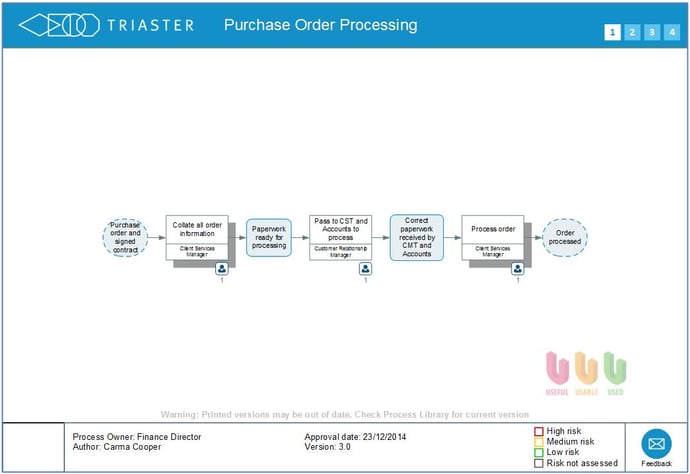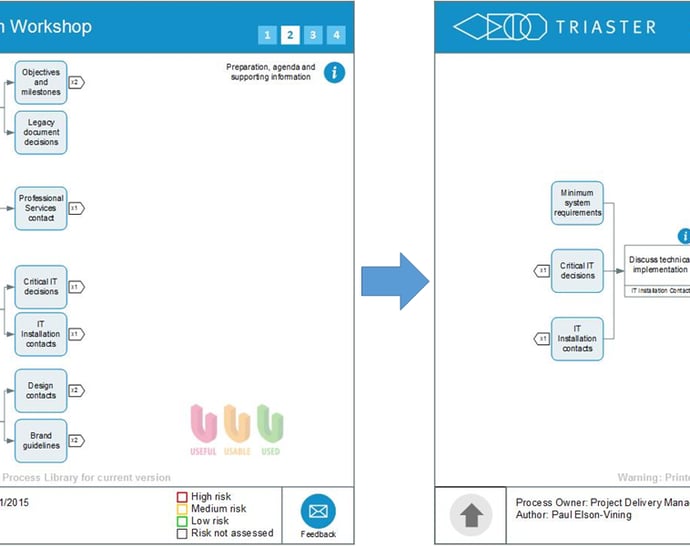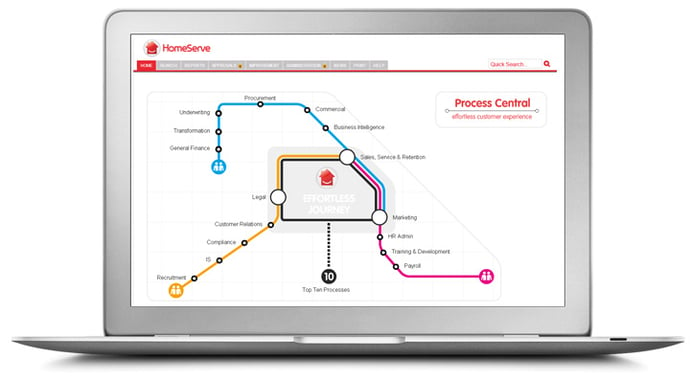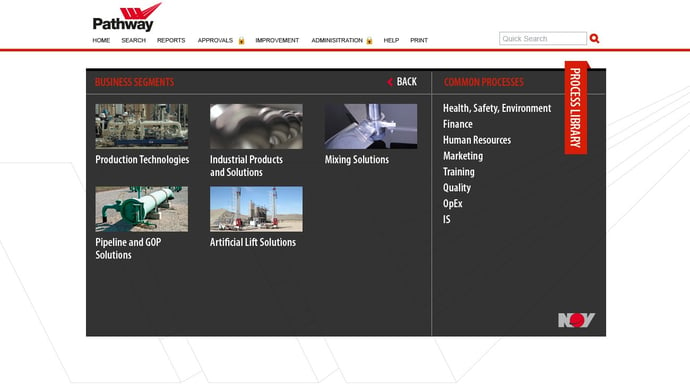How do we start to connect the various areas of our organisation so that they work together rather than in silos? How can we get a holistic view of our end-to-end processes, but show the handoff between different areas/departments? These are both questions asked of Triaster recently and although very different questions, there is largely one answer to both.
One System at the Heart of the Organisation
The starting point for addressing both of the questions above, is for the whole organisation to agree to use one business management system. Your organisation may call it a business management system (BMS) quality management system (QMS) or information management system (IMS), but the key thing is that the whole organisation agrees to use one system for capturing and understanding what the organisation does.
Take a Business Process Management (BPM) Approach
What is a BPM approach?
The best definition of Business Process Management as far as I am concerned is:
"The discipline of managing processes (rather than tasks) as the means for improving business performance outcomes and operational agility. Processes span organisational boundaries, linking together people, information flows, systems and other assets to create and deliver value to customers and constituents." Gartner "Business process management (BPM)".
Because, as Gartner say, processes span organisational boundaries, taking a BPM approach is ideal for breaking down barriers between departments and giving a holistic view of the organisation.
How Process Mapping can unify your departments
Taking a BPM approach starts with capturing your organisation’s end-to-end processes as process maps. A process map sets out in diagrammatic form, all the steps and decisions in a process.
A process is a transformation. It transforms inputs into outputs. So a process map shows the steps taken by your organisation to deliver to its end customers. Because it is set out in diagrammatic form, it sets out the steps very clearly and without too much detail.

It is important that the whole organisation uses one consistent set of process mapping shapes and one process mapping methodology to capture their processes. Without this different department’s process maps will be presented differently and not easily join together, or be understood by the rest of the organisation. To enable this consistency Triaster restrict the process mapping shapes available in our process mapping toolset to the key shapes required: Inputs, Outputs, Activities and Decisions.
Triaster also promotes a process mapping methodology – Noun verb process mapping – which a whole organisation can easily adopt without extensive process mapping training.
Other process mapping systems have their own ways of approaching this.
To read more about Triaster process mapping shapes, please have a look at:
Common Process Mapping shapes and their Definitions
Please click here to read more about the Noun-Verb methodology of process mapping.
It is also important that the process maps link together to show the end-to end processes – likely to be many A4 pages long. This should be easy to do and easy to follow.

Business Process Management System
Once captured – and whilst this is not a quick job, provided that the right process mapping tool is used it isn’t complex – the Process Maps must be shared by the whole organisation.
This is where the one system at the heart of the organisation comes in.
To give a holistic view of your organisation, the process maps capturing the end-to-end processes must be accessible by the whole organisation. If intelligently housed and presented in one centralised BPM system, this view (or model) - will start to transform the culture of your organisation.
How BPM Systems Break Down Silos
Being able to access a model of your organisation, focused on what is delivered to the end customer, really helps to break down silos in an organisation. It reminds each department that they are part of a larger whole and also gives clarity to what the rest of the organisation is doing.
In mapping the end-to-end processes, departments will need to speak to each other, particularly as the maps are linked together. This both starts to break down barriers between departments and creates a holistic view of the organisations’ end-to-end processes.
BPM System Functionality
It is important that as well as being easily accessible – from the intranet for example- the system is easy to use. Really good Search functionality is crucial as well as good navigation.
Good Navigation?
Good navigation will enable the end user to follow the flow of the process through from one department to another, without feeling that they have strayed into ‘some else’s territory’. It will also encourage cross departmental use. This is key to breaking down silos.
BPM Structure
This is linked to how the system is structured. It is really tempting to structure the menu options according to departments, but to break down silos it is important to structure it according to products or services delivered to the customer. As in the systems shown below:


It also helps to show common processes as such – i.e. not affiliated to any one department or unit. For more information on this please read:
Business Process Management (BPM) system structure: Core vs business unit processes
It’s not all About the System
This is where the answer to the two original questions starts to diverge.
Implementing a centralised BPM system, does indeed deliver a holistic view of your end-to-end processes and show the handoffs between different areas/departments.
However on its own it won’t result in your business working together rather than in silos. It is however a key component to achieving this. With this in place, a cultural change can gradually be implemented, supported by the system.
Cultural changes take on-going communication and above all vocal senior support and there is no short cutting this. But with a great BPM system to back it up, you will in time be able to break down silos and leverage the whole business working together.
We hope that you have found this article useful. Triaster offers three BPM systems, which sit at the heart of your organisation to deliver a holistic view of your end-to-end processes and the handoff points between departments. We also offer a design service to best promote a whole company view and communication packages to break down siloed working.
For more about the problems Triaster solve, please join a Why Triaster? webinar or contact us today.
Related articles:
Problems with Business Process Management: Getting employees to follow the process
Common Process Mapping shapes and their Definitions
Business Process Management (BPM) system structure: Core vs business unit processes
Written by Emma Harris
Emma was Operations Director for Triaster for nearly 20 years, during which time as well as learning and perfecting her BPM and process improvement skills, she honed her inbound marketing expertise. She now runs D2e - Designed to engage - which designs and develops bespoke, engaging, HubSpot CMS websites, that help your entire company to grow and scale. She is delighted to still be delivering Triaster's marketing, whilst also helping other companies turn their websites into their hardest working asset.


